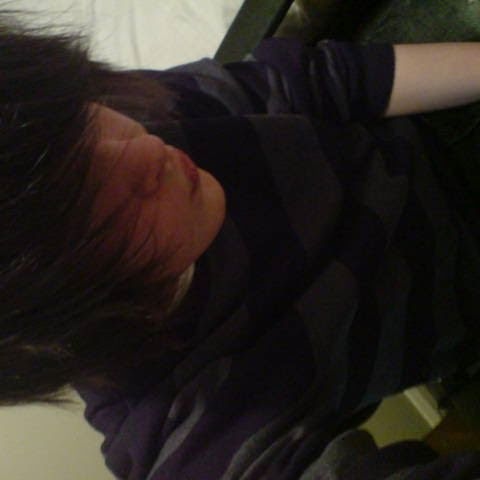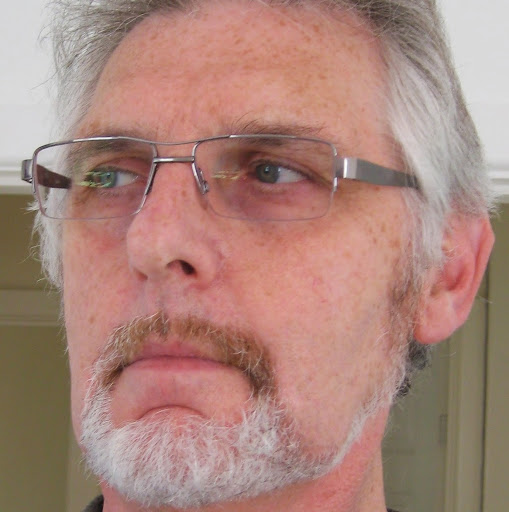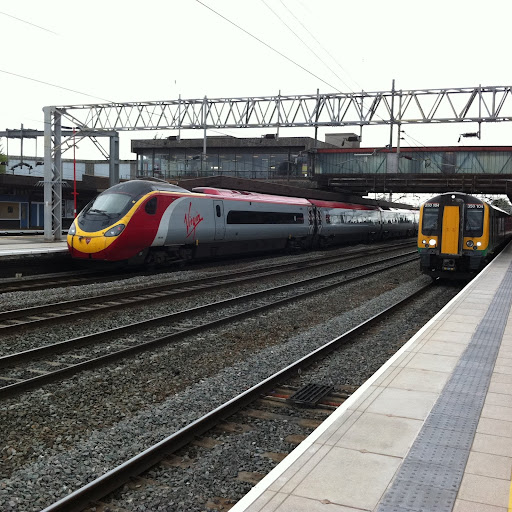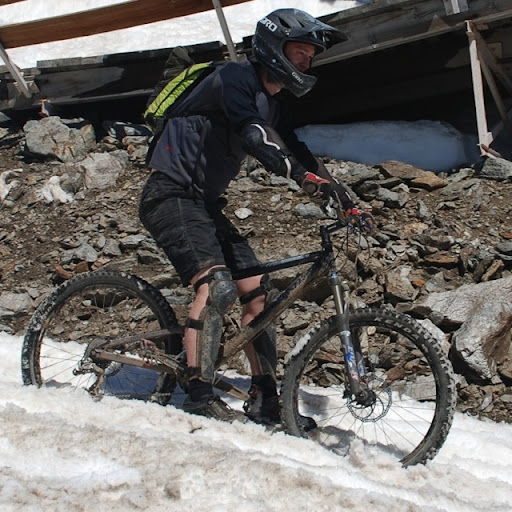Peter A Latham
age ~93
from Dedham, MA
- Also known as:
-
- Peter S Latham
- Peter C Latham
- Peter Delia
- Phone and address:
-
75 Bullard St, Dedham, MA 02026
7813208384
Peter Latham Phones & Addresses
- 75 Bullard St, Dedham, MA 02026 • 7813208384
- 27 Business St, Hyde Park, MA 02136 • 6173330305 • 6173339773
- 27 Business St #A, Hyde Park, MA 02136 • 6173339773 • 6177399393
- 27A Business St, Hyde Park, MA 02136 • 6173339773
- 27 Business St #2, Hyde Park, MA 02136
- 295 Beacon St, Boston, MA 02116 • 6172676961
- 124 Commonwealth Ave, Boston, MA 02116
- 883 Boylston St, Boston, MA 02116
- Jamaica Plain, MA
- 36 Harrison St, Brookline, MA 02446 • 6177380363
- Rye, NH
- 27 Business St #A, Hyde Park, MA 02136 • 6175381265
Work
-
Position:Food Preparation and Serving Related Occupations
Education
-
Degree:High school graduate or higher
Specialities
Real Estate Development and Finance • Land Use Planning • Corporate • Agricultural Law
Wikipedia References

Peter Latham
Work:
Position:
Tennis Player
Skills & Activities:
Sport:
English racquets player • English real tennis player • Racquets • Real tennis
Name / Title
Company / Classification
Phones & Addresses
Chief Financial Officer
Medicept, Inc
Consulting Services · Surgical & Medical Instrument Mfg
Consulting Services · Surgical & Medical Instrument Mfg
200 Homer Ave, Ashland, MA 01721
5082318842
5082318842
Treasurer
FILTERFUGE TECHNOLOGIES, INC
200 Homer Ave, Ashland, MA 01721
66 Malcolm Rd, Jamaica Plain, MA 02130
66 Malcolm Rd, Jamaica Plain, MA 02130
Treasurer
LATHAM LABORATORIES, INC
65 Hickory Ln, Carlisle, MA 01741
66 Malcolm Rd, Jamaica Plain, MA 02130
66 Malcolm Rd, Jamaica Plain, MA 02130
Principal
Biopharm Services, Inc
Services-Misc
Services-Misc
200 Homer Ave, Ashland, MA 01721
Resumes

President At Latham Biopharm Group
view sourcePosition:
President at Latham BioPharm Group
Location:
Greater Boston Area
Industry:
Biotechnology
Work:
Latham BioPharm Group since Sep 2010
President
BioPharm Services, Inc. and New Venture Advisors, Inc. 1996 - 2010
President
Drug Delivery Development, Inc. 1994 - 1996
V.P. Engineering and Licensing
McDonnell Douglas Corporation (now Boeing) 1986 - 1992
Subsystem Manager, Lead Engineer, Design Engineer
President
BioPharm Services, Inc. and New Venture Advisors, Inc. 1996 - 2010
President
Drug Delivery Development, Inc. 1994 - 1996
V.P. Engineering and Licensing
McDonnell Douglas Corporation (now Boeing) 1986 - 1992
Subsystem Manager, Lead Engineer, Design Engineer
Education:
MIT's Sloan School 1992 - 1994
MSc Management Rensselaer Polytechnic Institute 1982 - 1986
BSc Mechanical Engineering
MSc Management Rensselaer Polytechnic Institute 1982 - 1986
BSc Mechanical Engineering
Certifications:
Program Management Professional (PgMP), Project Management Institute (PMI)

Owner, Biopharm Services, Inc.
view sourcePosition:
Owner at BioPharm Services, Inc.
Location:
Greater Boston Area
Industry:
Biotechnology
Work:
BioPharm Services, Inc.
Owner
Owner
Education:
Massachusetts Institute of Technology - Sloan School of Management

Peter Latham
view sourceLocation:
United States

Peter Latham
view sourceLocation:
United States

Peter Latham
view sourceLocation:
United States
Isbn (Books And Publications)




The Captive Local State: Local Democracy Under Siege
view sourceAuthor
Peter Latham
ISBN #
0851246516
Lawyers & Attorneys

Peter Latham - Lawyer
view sourceOffice:
Latham, Luna, Eden & Beaudine, LLP
Specialties:
Real Estate Development and Finance
Land Use Planning
Corporate
Agricultural Law
Land Use Planning
Corporate
Agricultural Law
ISLN:
905609179
Admitted:
1981
University:
University of Central Florida, B.S.B.A., 1978
Law School:
Stetson University, J.D., 1981
Us Patents
-
Exercise Device
view source -
US Patent:6419611, Jul 16, 2002
-
Filed:Dec 23, 1999
-
Appl. No.:09/470846
-
Inventors:James H. Levine - Westford MA
Douglas L. Sheadel - Westford MA
Peter A. Latham - Brookline MA -
Assignee:FitnessLab, LLC - WestFord MA
-
International Classification:A63B 21008
-
US Classification:482 53, 482 62, 482112, 482130
-
Abstract:An exercise device having two chambers, underlying two elastic membrane portions, in a position to closely support above the ground, the left and right foot respectively, of a user. A support structure such as a housing for the first and second membrane portions permit raising and lowering, as by shifting body weight, of the left and right foot in a stair stepping action, preferably without raising each foot from contact with the membrane portions to elastically stretch the membrane portions in succession. A fluid underlies the first and second elastic membrane portions. The fluid preferably is displaced by the stretching of each membrane portion and in the preferred embodiments, it acts with the membrane portions to support the body of a user in use.
-
System And Method For Virus Inactivation
view source -
US Patent:20130236358, Sep 12, 2013
-
Filed:Mar 12, 2013
-
Appl. No.:13/796848
-
Inventors:Peter W. Latham - Acton MA, US
Nigel Grinter - Buffalo Grove IL, US
Robert Sever - Arlington Heights IL, US -
International Classification:A61L 2/00
-
US Classification:422 33, 422255
-
Abstract:Methods and systems for virus inactivation in the production or processing of biological or other sensitive substances are provided. The disclosed methods and systems for virus inactivation involve the key steps of dissolving carbon dioxide into biological or other sensitive substances; and treating the substance with the dissolved carbon dioxide at conditions which are less than critical pressure and temperature for a prescribed treatment time to inactivate at least 80% of the target virus or viruses contained within the biological or other sensitive substances. The disclosed carbon dioxide treatments for virus inactivation may optionally include concurrently or sequentially subjecting the substances with an acid treatment to lower the pH of the substance and inactivate viruses contained within the biological or other sensitive substance. Operating conditions for the disclosed carbon dioxide treatments preferably involve sparging carbon dioxide gas into the substance until the composition is saturated with carbon dioxide and is conducted at pressures below about 5 MPa; at temperatures of less than or equal to 30 C.; and for a treatment time of between about one minute and about 2000 minutes.
-
Automatic Interior Lighting Device For Drawers, Cabinets And The Like
view source -
US Patent:52462854, Sep 21, 1993
-
Filed:Mar 31, 1992
-
Appl. No.:7/861234
-
Inventors:Loren Redburn - Newton MA
Peter A. Latham - Boston MA -
International Classification:A47B 7700
F21V 3300 -
US Classification:3122235
-
Abstract:A self-contained automatic lighting device for universal use in furniture, drawers, cabinets, boxes and other enclosures without the need of additional elements comprising a backing plate, cover means, light sources and pivoting switch means wherein said switch means has a contacting face terminating in an extension. The lighting device further includes a photosensor to prohibit activation when light is sensed in the area of the device and timer means to deactivate the light sources after the switch means has been opened for a predetermined period of time.
-
Pivotable Sandwich Bag Assistance Device
view source -
US Patent:50956850, Mar 17, 1992
-
Filed:Jun 4, 1990
-
Appl. No.:7/532454
-
Inventors:Peter A. Latham - Boston MA
-
Assignee:HCL Limited - CT
-
International Classification:B65B 3900
-
US Classification:53473
-
Abstract:A method and device for assisting a user with transferring an object supported by the device into a flexible storage container, the device comprising a substantially flat base member having a pair of opposed side edges and a pair of opposed end edges, a side wall extending substantially perpendicular from one surface of the base member along each of the two opposed side edges, and a protrusion member projecting substantially normal from the opposite surface of the base member, for providing a pivot about which the device can pivot, the protrusion member being positioned substantially along a traversed axis of the device and being spaced from each of the opposed end edges so that when the device is placed upon a flat support surface and the protrusion member engages that support surface, the device is pivotable about the protrusion member whereby only one end edge of the base member is able to contact that support surface at any given time thereby facilitating engagement with a storage container and transfer of an object.
-
Dispenser For Viscous Substances
view source -
US Patent:54821878, Jan 9, 1996
-
Filed:Nov 29, 1994
-
Appl. No.:8/346533
-
Inventors:Kevin A. Poulsen - Newtonville MA
James H. Edwards - Winchester MA
Peter A. Latham - Boston MA -
Assignee:Hygienix, Inc. - Cambridge MA
-
International Classification:G01F 1100
-
US Classification:222207
-
Abstract:A dispenser for a viscous substance includes a disposable plastic container for the substance and a pump permanently unreleasably mounted to the top of the container for pumping the substance from the container. The pump includes a housing communicating with the interior of the container and a pumping assembly including a movable housing wall and a tubular member connected to the wall and being movable along a motion axis between extended and retracted positions relative to the housing. An actuator is provided for the pump which includes a support member removably mounted to the cartridge, a target member movably mounted to the support member and linkage for releasably linking the target member to the tubular member so that when the target member is moved in one direction, the pumping assembly is moved to its extended position in the housing and when the target member is moved in another direction, the pumping assembly is moved to its retracted position in the housing. Preferably, the connection between the tubular member and the movable housing wall is a lost-motion connection.
-
Bird Feeder
view source -
US Patent:44984235, Feb 12, 1985
-
Filed:Jan 4, 1983
-
Appl. No.:6/455601
-
Inventors:Leon Gainsboro - Wayland MA
Peter A. Latham - Rye NH -
Assignee:OPUS, Inc. - Framingham MA
-
International Classification:A01K 3901
-
US Classification:119 51R
-
Abstract:A bird feeding device is provided with a perch which can be adjustably positioned with respect to the feeding opening to selectively accommodate different sizes of birds. The perch is movable toward and away from the feeding opening so that for larger birds the perch is positioned farther from the feeding opening than for smaller birds. The disclosed embodiment also includes a simultaneous heightwise adjustment for the position of the perch so that it is lowered when in its more extended position. Also disclosed is an improved arrangement for attaching the perch and feeding device to the container of the bird feeder. Another aspect of the invention relates to a bird feeder having a storage and feeding tube which is detachably connected to an overhead support by a quick disconnect device which provides for quick and simplified filling of the feed tubes as well as an arrangement which minimizes spilling or loss of bird seed.
-
Beverage Can Holder
view source -
US Patent:D3623718, Sep 19, 1995
-
Filed:May 20, 1994
-
Appl. No.:D/023270
-
Inventors:Dave Williams - Glendora CA
Gene Oglesbee - Azusa CA
Peter A. Latham - Brookline MA -
US Classification:D 7622
-
Discharge Nozzle
view source -
US Patent:53988531, Mar 21, 1995
-
Filed:Jan 26, 1994
-
Appl. No.:8/186561
-
Inventors:Peter A. Latham - Boston MA
-
International Classification:B65D 572
-
US Classification:222491
-
Abstract:The present invention is a discharge nozzle for flexible dispensing tubes containing paste-like or semi-liquid substances. It solves the problem of having to contact the discharge opening of the dispensing tube against a secondary surface to cut off the flow of substance. This is advantageous for eliminating the transfer of germs between the discharge opening of the dispensing tube and the secondary surface. Additionally, it solves the problem of eliminating unwanted accumulation of substance at the nozzle discharge, even when the dispensing tube is used in a repetitive manner, over a long period of time. The nozzle is small in size, has a symmetrical interior surface, and has a discharge portion formed at least partially from a material possessing a low coefficient of friction. This discharge portion has an elongated slit and is attached to a tubular neck. The elongated slit may be configured in the shape of an "I" to form two displaceable tongues.
Plaxo

Peter Latham
view sourceNorth Yorkshire
Flickr
Myspace

Peter Latham
view sourceLocality:
Preston (hometown is Blackburn), Northwest
Gender:
Male
Birthday:
1939

Peter Latham
view sourceGoogleplus

Peter Latham
Tagline:
Taking one picture at a time

Peter Latham

Peter Latham

Peter Latham

Peter Latham

Peter Latham

Peter Latham

Peter Latham
Classmates

Peter Latham
view sourceSchools:
Norwalk High School Norwalk CT 1963-1967
Community:
Janice Vitello

Peter Latham
view sourceSchools:
Munsey Park Elementary School Manhasset NY 1937-1943, Toaz Junior High School Huntington NY 1944-1945
Community:
Robyn Keil, Patty Duce

peter latham, Camp E-Ma-H...
view source
Peter Latham, Smith Vocat...
view source
Munsey Park Elementary Sc...
view sourceGraduates:
Peter Latham (1937-1943),
Sean Casey (1965-1972),
David Wilmer (1953-1960),
Jim Carmichael (1959-1964),
Jewel Satterfield (1988-1993)
Sean Casey (1965-1972),
David Wilmer (1953-1960),
Jim Carmichael (1959-1964),
Jewel Satterfield (1988-1993)

Camp E-Ma-Henwu, Newport,...
view sourceGraduates:
peter latham (1979-1983),
Megan Williford (1999-2003),
Eugene If Different (1985-1987),
Scott Moseman (1996-2000)
Megan Williford (1999-2003),
Eugene If Different (1985-1987),
Scott Moseman (1996-2000)

Toaz Junior High School, ...
view sourceGraduates:
Harold Brondum (1953-1955),
Gail Denton (1961-1962),
Erin Blower (1977-1979),
Peter Latham (1944-1945)
Gail Denton (1961-1962),
Erin Blower (1977-1979),
Peter Latham (1944-1945)
Youtube

Peter Latham
view source
Ellis Peter Latham Jes
view source
Peter Latham
view source
Peter Latham
view source
Peter Latham
view source
Peter Latham
view source
Peter Latham
view source
Peter Latham
view sourceGet Report for Peter A Latham from Dedham, MA, age ~93














